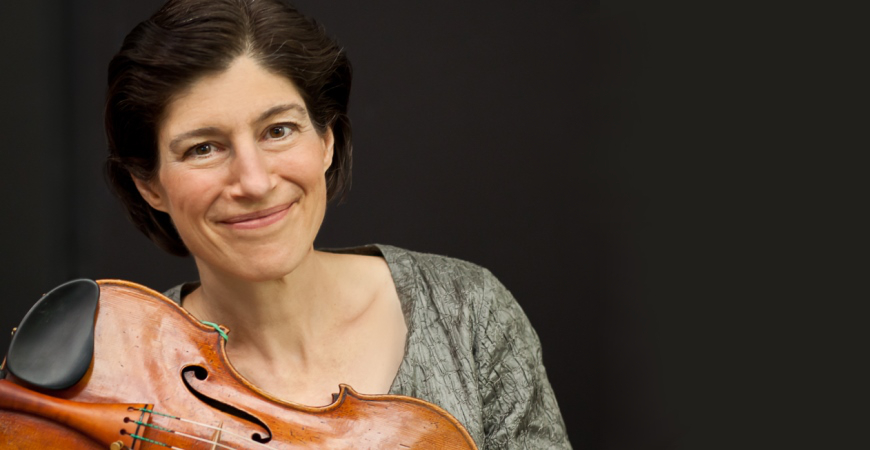Letting go - Kim Kashkashian about her Hungarian affiliations
The world-renowned violist will give a recital with Péter Nagy on 26 November 2014 at Liszt Academy. On this occasion she summarized her relation to Hungarian music.
The editors asked me to write about my Hungarian affiliations. Perhaps I will disappoint your expectations: because I do not know anything. Yet, it seems that, for me both influence and instinctive guidance have often had Hungarian sources. Let me start with memories of Sándor Végh at the Marlboro Festival in the late '70s. He spoke to us about using the bow as if it were a breathing, living thing: about allowing it its own life; that our ower came from release. Then he showed us that when your sound is living and breathing, you do not need to "help" each other with cues. Again, true power occurs when doing less... He was one of few interpretive artists I have encountered who always had instinctive access to the balance of the golden mean (the Fibonacci point) in his musical structures.

Kim Kashkashian (Photo: Steve Riskind)
Much later I had the good fortune to work with György Kurtág. This work opened unexpected doors: his work with interpreting artists is based on deep intuition, but supported by a breadth of knowledge that is unique. We examined the Brahms sonatas, Schumann, solo Bach, the unfinished Bartók concerto, and of course, always, his own compositions. I learned much about colour, control, clarity, speaking and singing, but again the main concern was to create balance: in gesture, emotional content and structure. He would pull the most seemingly unrelated musical examples together until you heard the parallels: until you understood. Kurtág once said to me that we musicians must torture ourselves until we get it right. He was referring to his own compositional process, and the elimination of all but the necessary. And he also worked with interpreters toward the same goal: creating a potent truth by expressing only the necessary.
The work with Péter Eötvös, first on Replica, the work for viola and orchestra, and then on the Bartók concerto, had a very different flavour to it. It was at about this time that I was introduced to the sound files of the Bartok archive collection, and began to sense the depth of relationship between spoken and sung language and then the essence of grammar; in thought, in gesture, in structure of all kinds. Péter Eötvös hears like a wolf: nothing passes his attention unremarked, yet he remains infinitely flexible in accepting interpretations, as long as the grammatical balance is right. Again, it is about the magic of the Fibonacci point. I believe that every human has a sixth sense which intuitively recognizes this balance point, yet we spend most of our time struggling to reproduce it. Probably, as in any of the great disciplines (even the martial arts) the final work is about letting go!
Words of Kim Kashkashian, originally published in the Fall 2014 issue of Liszt Academy Concert Magazine.


